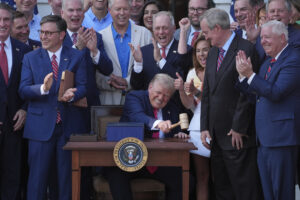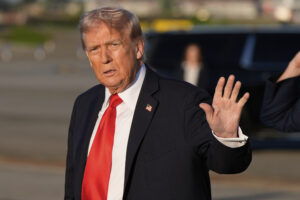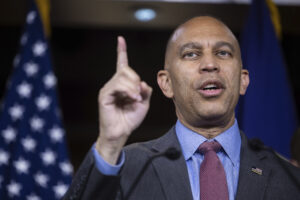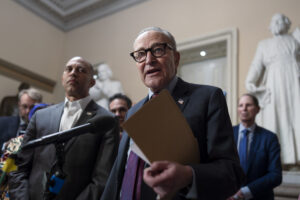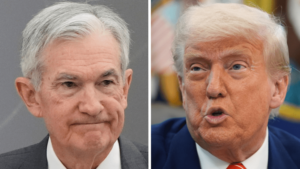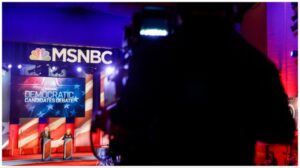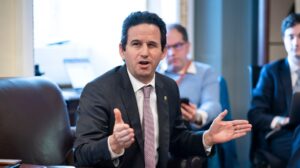The Dictatorship
European Central Bank expected to keep rates on hold as economy weathers Trump’s tariffs
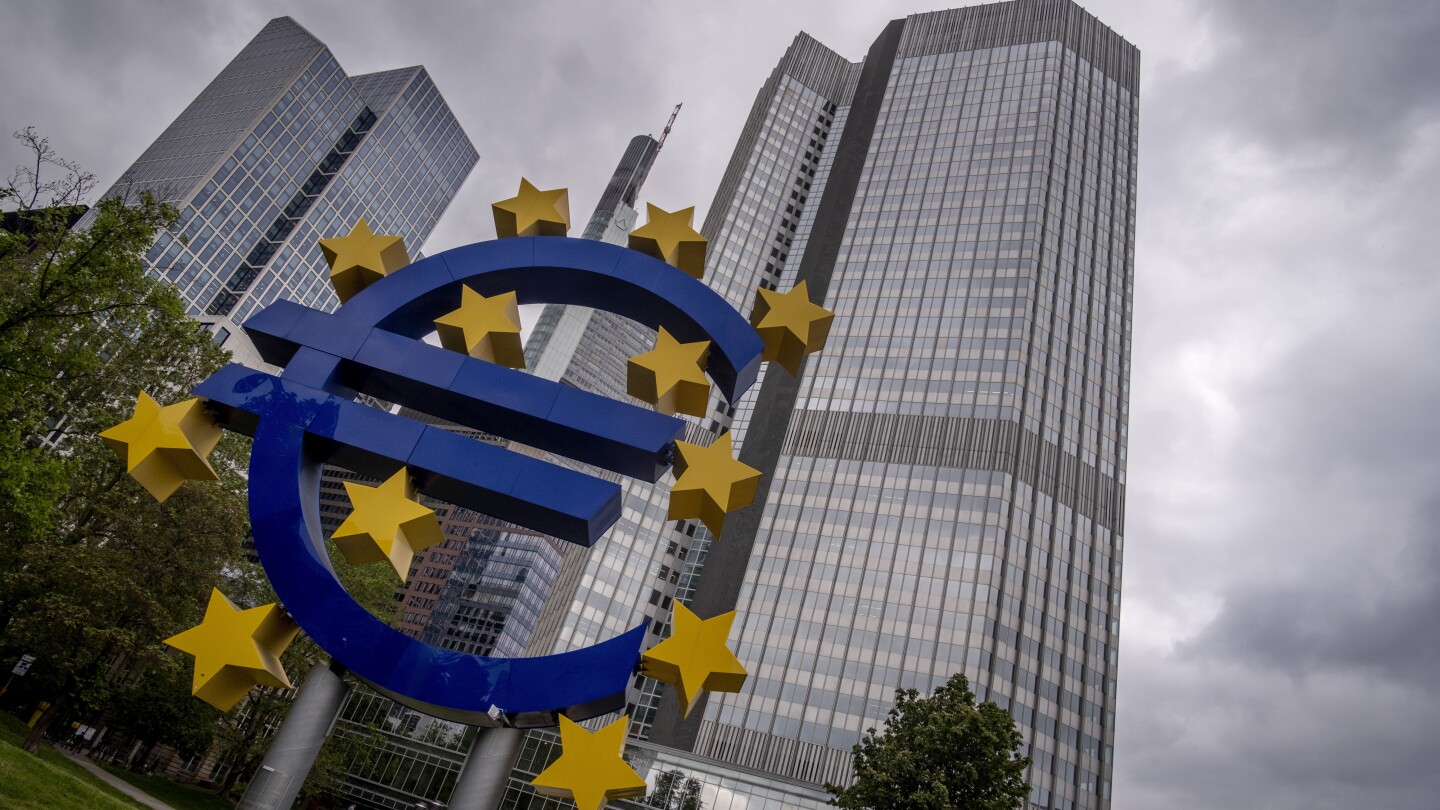
FRANKFURT, Germany (AP) — The European Central Bank left interest rates unchanged Thursday with inflation back under control and the economy weathering Trump’s tariff onslaught better than expected.
The bank’s rate-setting council left its benchmark deposit rate unchanged at 2% at a meeting at its skyscraper headquarters in Frankfurt.
The focus in Europe has shifted to the fiscal crisis in France and any possible role for the ECB in containing potential market turmoil that could erupt from the country’s out-of-control deficit and political logjam.
Bank President Christine Lagarde said after the rate decision that monetary policy was “in a good place” and that decisions are being made “meeting by meeting,” She gave no hint of future moves, saying the bank is “not on a predetermined path.”
The ECB is standing pat on interest rates even as the US Federal Reserve has held the door open for a possible cut at its Sept. 17 meeting.
The 20 countries that use the euro currency — and where the ECB sets rate policy — showed 0.1% growth in the second quarter over the quarter before, not great but not sliding into outright recession either despite the disruption from U.S. President Donald Trump’s new and higher tariffs. The S&P Global survey of purchasing managers, a key indicator of economic activity, came in at 51 in August, with readings over 50 indicating expansion.
The EU’s executive commission calmed the mood somewhat by negotiating a 15% ceiling on US tariffsor import taxes, on European goods brought into the US. While that’s far higher than pre-Trump tariff levels, Trump had threatened even higher rates and the deal gives some certainty that trade will continue, albeit with higher costs.
“Trade uncertainty has clearly diminished,” Lagarde said.
The ECB’s deposit rate influences borrowing costs throughout the economy. The ECB raised rates sharply to combat a burst of inflation in 2021-23, and has since lowered them as inflation came back under control and concerns grew about growth. Higher rates fight inflation but can slow growth, while lower rates can stimulate economic activity by making borrowing cheaper for purchases.
Eurozone inflation was 2.1% in August, roughly in line with the bank’s target of 2%. With growth holding up, that means there was no great pressure to move rates Thursday. Analysts think another cut is possible in coming months.
Lagarde was asked several times about the French government’s fiscal crisis. The French government’s bond-market borrowing costs have risen somewhat due to the inability of a divided parliament to tackle the large deficit, which was 5.8% of GDP last year. In case of a full-blown market panic that sends rates higher, the ECB could intervene to purchase French bonds and drive down borrowing costs. But that’s only possible for countries that are obeying the EU’s rules on limiting debt or are moving to comply, which France at this point is not.
Lagarde said the ECB’s emergency bond market backstop, dubbed the transmission protection instrument, was not discussed at the meeting and that the broader European bond market was functioning normally.
“I’m not commenting on any particular country, but suffice to say that we always monitor market developments and euro area sovereign bonds are orderly and are functioning smoothly with good liquidity,” she said.
Analysts say the challenge for Lagarde is to avoid suggesting the ECB would bail out politicians who won’t manage the government’s finances properly, while not taking such a hard line that she unsettles bond markets.
The Dictatorship
Trump administration requests emergency ruling to remove Cook from Fed board
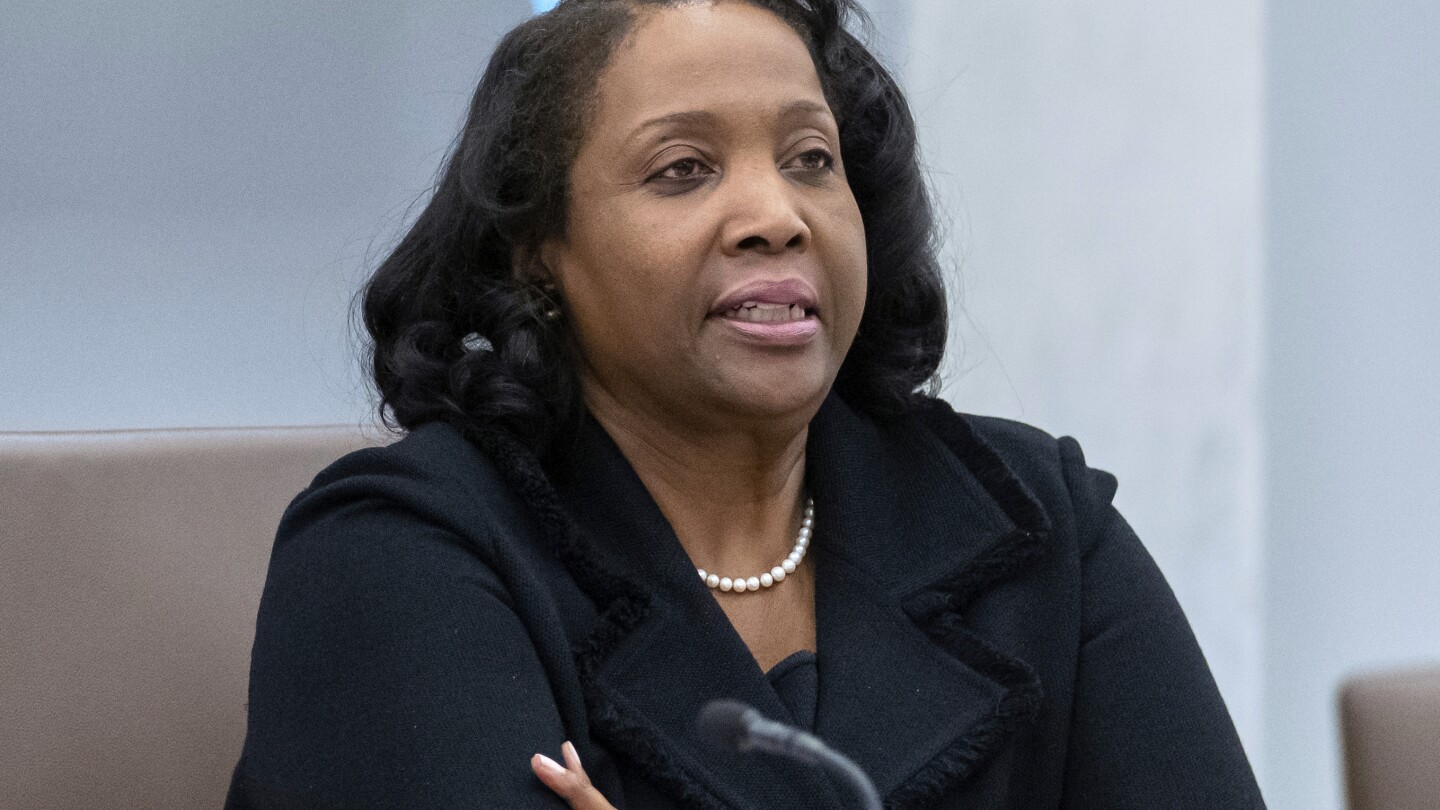
WASHINGTON (AP) — The Trump administration has asked an appeals court to remove Lisa Cook from the Federal Reserve’s board of governors by Monday, before the central bank’s next vote on interest rates.
The request represents an extraordinary effort by the White House to shape the board before the Fed’s interest rate-setting committee meets next Tuesday and Wednesday. At the same time, Senate Republicans are pushing to confirm Stephen MiranPresident Donald Trump’s nominee to an open spot on the Fed’s board, which could happen as soon as Monday.
Trump sought to fire Cook Aug. 25but a federal judge ruled late Tuesday that the removal was illegal and reinstated her to the Fed’s board. Trump has accused Cook of mortgage fraud because she appeared to claim two properties as “primary residences” in July 2021, before she joined the board. Such claims can lead to a lower mortgage rate and smaller down payment than if one of them was declared as a rental property or second home. Cook has denied the charges.
On Tuesday, U.S. District Court Judge Jia Cobb ruled that the administration had not satisfied a legal requirement that Fed governors can only be fired “for cause,” which she said was limited to misconduct while in office. Cook did not join the Fed’s board until 2022.
In their emergency appeal, Trump’s lawyers argued that even if the conduct occurred before her time as governor, her alleged action “indisputably calls into question Cook’s trustworthiness and whether she can be a responsible steward of the interest rates and economy.”
The administration asked an appeals court to issue an emergency decision reversing the lower court by Monday. If their appeal is succesful, Cook would be removed from the Fed’s board until her case is ultimately resolved in the courts, and she would miss next week’s meeting.
If the appeals court rules in Cook’s favor, the administration could seek an emergency ruling from the Supreme Court.
Either way, the Fed is expected to cut its benchmark interest rate next week by a quarter-point to about 4.1%. When the Fed reduces its key rate, it often, over time, lowers borrowing costs for mortgages, auto loans, and business loans. Some of those rates have already fallen in anticipation of cuts from the Fed.
Should Miran, a top economic adviser to Trumpwin approval in time to join the Fed next week, he could push for a steeper half-point reduction to the Fed’s rate.
Yet there are 12 officials who vote on whether and by how much to cut, including the seven members of the Fed’s board as well as five of the Fed’s 12 regional bank presidents, who vote on a rotating basis.
Trump’s two other appointees to the Fed — Christopher Waller and Michelle Bowman — might also support a half-point cut, but several of the Fed’s bank presidents have expressed concern about stubbornly elevated inflation and would almost certainly oppose such a large reduction.
If the Fed approves a quarter-point cut, it is possible there could be dissenting votes both from officials who preferred no cut and from those who support a half-point.
The Dictatorship
Charlie Kirk’s killer blended in on Utah university campus, and a high-powered rifle is recovered
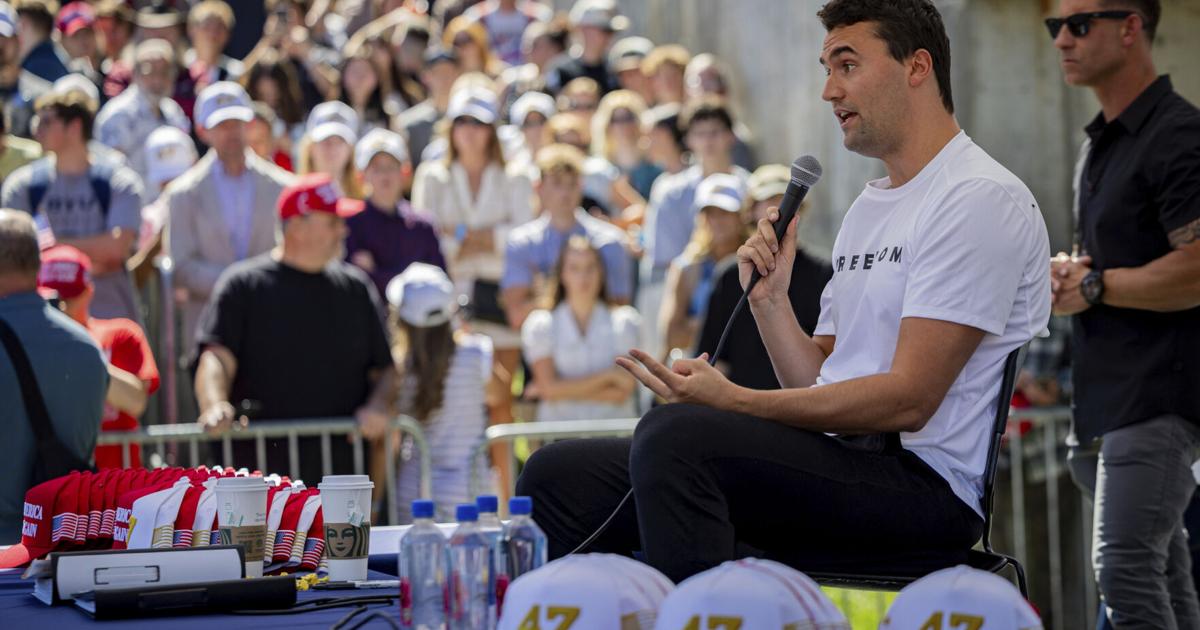
OREM, Utah (AP) — The shooter who assassinated conservative activist Charlie Kirk and then vanished off a roof and into the woods remained at large more than 24 hours later Thursday as federal investigators appealed for the public’s help by releasing photos of the person they believe is responsible.
Investigators obtained clues, including a palm print, a shoe impression and a high-powered hunting rifle found in a wooded area along the path the shooter fled. But they had yet to name a suspect or cite a motive in the killing they were treating as the latest act of political violence to convulse the United States across the ideological spectrum.
The photos of a person in a hat, sunglasses and a long-sleeve black shirt, with a backpack, as well as a $100,000 reward for information leading to an arrest suggested that law enforcement thought tips from the public might be needed to crack the case. Two people who were taken into custody shortly after Wednesday’s shooting at Utah Valley University were later released, forcing officials to chase new leads on a separate person of interest they pursued Thursday.
During a news conference Thursday with FBI Director Kash Patel, authorities showed a video of a person being sought in connection with the killing racing across the roof of the building where the shot was fired, dropping down to the ground and fleeing into the woods. In the process, officials say, the shooter left behind imprints, including a palm print, that investigators hope can yield clues to their identity.
Utah Gov. Spencer Cox pleaded for the public’s help in the search for the shooter.
“We have people all over the country trying to bring this perpetrator to justice,” he said, adding that the FBI had received more than 7,000 leads and tips.
He said they’re getting everything in order to pursue the death penalty.
The direct appeals for public support at the nighttime news conference, including new and enhanced photos, appeared to signal law enforcement’s continued struggles a day and a half into the search to identify the shooter and pinpoint the person’s whereabouts.
Authorities didn’t take questions, and Patel did not speak at the news conference.
One clue in the investigation was a Mauser .30-caliber, bolt-action rifle found in a towel in the woods. A spent cartridge was recovered from the chamber, and three other rounds were loaded in the magazine, according to information circulated among law enforcement and described to The Associated Press. The weapon and ammunition were being analyzed by law enforcement at a federal lab.
Sisters Clara Hetland, 4, left, Haddie Hetland, center, 9, and Audra Hetland 6, of Surprise, Ariz., spend time at a makeshift memorial set up at Turning Point USA headquarters after the shooting death at a Utah college on Wednesday of Charlie Kirk, the co-founder and CEO of the organization, Thursday, Sept. 11, 2025, in Phoenix. (AP Photo/Ross D. Franklin)
Sisters Clara Hetland, 4, left, Haddie Hetland, center, 9, and Audra Hetland 6, of Surprise, Ariz., spend time at a makeshift memorial set up at Turning Point USA headquarters after the shooting death at a Utah college on Wednesday of Charlie Kirk, the co-founder and CEO of the organization, Thursday, Sept. 11, 2025, in Phoenix. (AP Photo/Ross D. Franklin)
Grisly video shared online
The attack, carried out in a broad daylight as Kirk spoke about social issues from a university courtyard, was captured on grisly videos that spread on social media.
The videos show Kirk, a close ally of President Donald Trump who played an influential role in rallying young Republican voters, speaking into a handheld microphone when suddenly a shot rings out. Kirk can be seen reaching up with his right hand as blood gushes from the left side of his neck. Stunned spectators gasp and scream before people start running away.
The shooter, who investigators believe blended into the campus crowd because of a “college-age” appearance, fired a single shot from the rooftop where they were perched before jumping off.
“I can tell you this was a targeted event,” said Robert Bohls, the top FBI agent in Salt Lake City.
Trump, who was joined by Democrats in condemning the violencesaid he would award Kirk the Presidential Medal of Freedom, the highest civilian honor in the U.S., while Vice President JD Vance and his wife, Usha, arrived Thursday afternoon in Salt Lake City to visit with Kirk’s family. Vance posted a remembrance on X chronicling their friendship, dating back to initial messages in 2017, through Vance’s Senate run and the 2024 election.
“So much of the success we’ve had in this administration traces directly to Charlie’s ability to organize and convene,” Vance wrote. “He didn’t just help us win in 2024, he helped us staff the entire government.”
Kirk’s casket was flown aboard Air Force Two from Utah to Phoenix, where his nonprofit political youth organization, Turning Point USA, is based. Trump told reporters he plans to attend Kirk’s funeral. Details have not been announced.
Orem police monitor the campus at Utah Valley University a day after Charlie Kirk was shot and killed, in Orem, Utah, Thursday,, Sept. 11, 2025. (AP Photo/Lindsey Wasson)
Orem police monitor the campus at Utah Valley University a day after Charlie Kirk was shot and killed, in Orem, Utah, Thursday,, Sept. 11, 2025. (AP Photo/Lindsey Wasson)
Kirk was taking questions about gun violence
Kirk was a conservative provocateur who became a powerful political force among young Republicans and was a fixture on college campuses, where he invited sometimes-vehement debate on social issues.
He was shot while attending one such event Wednesday, a debate hosted by Turning Point at the Sorensen Center on campus in what was billed as the first stop on Kirk’s “American Comeback Tour.”
The event generated a polarizing campus reaction. An online petition calling for university administrators to bar Kirk from appearing received nearly 1,000 signatures. The university issued a statement last week citing First Amendment rights and affirming its “commitment to free speech, intellectual inquiry and constructive dialogue.”
Last week, Kirk posted on X images of news clips showing his visit was sparking controversy. He wrote, “What’s going on in Utah?”
One such provocative exchange played out immediately before the shooting, as he was taking questions from an audience member about gun violence when the shot was heard.
Attendees barricaded themselves in classrooms
Some attendees who bolted after the gunshot rushed into two classrooms full of students. They used tables to barricade the door and to shield themselves in the corners. Someone grabbed an electric pencil sharpener and wrapped the cord tightly around the door handle, then tied the sharpener to a chair leg.
Madison Lattin was watching a few dozen feet from Kirk’s left when she heard the bullet hit him.
“Blood is falling and dripping down, and you’re just like so scared, not just for him but your own safety,” she said.
On campus Thursday, the canopy stamped with the slogan Kirk commonly used at his events “PROVE ME WRONG” stood, disheveled.
Police barricades and tape is set up at Utah Valley University a day after Charlie Kirk was shot and killed, in Orem, Utah, Thursday, Sept. 11, 2025. (AP Photo/Lindsey Wasson)
Police barricades and tape is set up at Utah Valley University a day after Charlie Kirk was shot and killed, in Orem, Utah, Thursday, Sept. 11, 2025. (AP Photo/Lindsey Wasson)
Kathleen Murphy, a longtime resident who lives near the campus, said she has been staying inside with her door locked.
“With the shooter not being caught yet, it was a worry,” Murphy said.
Meanwhile, the shooting continued to draw swift bipartisan condemnation as Democratic officials joined Trump and other Republican allies of Kirk in decrying the attack, which unfolded dur ing a spike of political violence that has touched a range of ideologies and representatives of both major political parties.
“The murder of Charlie Kirk breaks my heart. My deepest sympathies are with his wife, two young children, and friends,” said Gabrielle Giffords, the former Democratic congresswoman who was wounded in a 2011 shooting in her Arizona district.
___
Tucker and Richer reported from Washington. Associated Press writers Nicholas Riccardi in Denver; Michael Biesecker, Brian Slodysko, Lindsay Whitehurst and Michelle L. Price in Washington; Ty O’Neil in Orem, Utah; Hallie Golden in Seattle; and Meg Kinnard in Chapin, South Carolina, contributed to this report.
The Dictatorship
Inflation likely rose last month as Trump’s sweeping tariffs boost goods prices

WASHINGTON (AP) — Inflation rose last month as the price of gas, groceries and airfares jumped while new data showed applications for unemployment aid soared, putting the Federal Reserve in an increasingly tough spot as it prepares to cut rates at its meeting next week despite persistent price pressures.
Consumer prices increased 2.9% in August from a year earlier, the Labor Department said Thursday, up from 2.7% the previous month and the biggest jump since January. Excluding the volatile food and energy categories, core prices rose 3.1%, the same as in July. Both figures are above the Federal Reserve’s 2% target.
A separate government report Thursday showed that weekly applications for unemployment aid jumped 27,000 to 263,000, the highest in nearly four years. Requests for jobless benefits are a proxy for layoffs. Recent reports have also showed that hiring has weakened dramatically this year and was lower than previously estimated last year.
The data raises the specter of “stagflation,” a trend that last bedeviled the U.S. economy in the 1970s. The term refers to a period of slower growth, higher unemployment along with rising inflation. It is unusual because a weak economy typically keeps inflation in check.
Such a scenario could create major headaches for the Fed as it prepares for a meeting next week, when policymakers are widely expected to cut their short-term rate to about 4.1% from 4.3%. The Fed is under relentless pressure from President Donald Trump to cut rates. At the same time, stubborn inflation while the job market is weakening is difficult for the central bank because they are diverging trends that require polar reactions from Fed policymakers to address.
Typically the Fed would cut its key rate when unemployment rises to spur more spending and growth. Yet it would do the opposite and raise rates — or at least keep them unchanged — in the face of rising inflation.
Last month, Chair Jerome Powell signaled that Fed officials are increasingly concerned about weaker hiring, setting the stage for a rate cut next week. Wall Street investors think there is an 85% chance the Fed will cut twice more after that, according to futures pricing tracked by CME Fedwatch.
“Consumer inflation came in mildly hotter than forecast, but not nearly high enough to prevent the Fed from starting to cut rates next week,” Kathy Bostjancic, chief economist for Nationwide, said. “The labor market is losing steam and reinforces that the Fed needs to start cutting rates next week and that it will be the start of a series of rate reductions.”
FILE- In this Feb. 5, 2018, file photo, the seal of the Board of Governors of the United States Federal Reserve System is displayed in the ground at the Marriner S. Eccles Federal Reserve Board Building in Washington. (AP Photo/Andrew Harnik, File)
FILE- In this Feb. 5, 2018, file photo, the seal of the Board of Governors of the United States Federal Reserve System is displayed in the ground at the Marriner S. Eccles Federal Reserve Board Building in Washington. (AP Photo/Andrew Harnik, File)
Where inflation heads next is a key question for the Fed. While Thursday’s report showed inflation picked up, data released Wednesday suggested prices at the wholesale level are cooling. Economists also noted that a separate measure of inflation that the Fed prefers, which will be released in about two weeks, should come in lower than Thursday’s figures and paint a more benign picture of prices.
On a monthly basis, overall inflation accelerated, rising 0.4% from July to August, faster than the 0.2% pace the previous month. Core prices rose 0.3% for the second straight month.
Many economists and some key members of the Fed think that the current pickup in inflation reflects one-time increases from Trump’s sweeping tariffs and won’t lead to a lasting inflationary trend. They argue that a weaker job market will hold down wages and force companies to keep prices in check.
Subadra Rajappa, head of U.S. rates strategy at Societe Generale, said that while inflation was elevated last month, there were also signs that the cost of services moderated, suggesting that outside of tariffs, prices are cooling.
Yet Joe Brusuelas, chief economist at RSM, a tax and consulting firm, says that higher-income households are still spending sufficiently to push some prices higher, such as hotel and airfare costs, which leapt last month. Such spending could keep inflation stubbornly high even in a weak job market, he said.
“The Fed’s getting ready to cut into a sustained increase in prices,” he said. “Very unusual spot. … we can see tariff induced inflation in a slow, steady and methodical manner.”
Goods prices picked up last month, a sign Trump’s sweeping tariffs are pushing up costs. Gas prices jumped 1.9% just from July to August, the biggest monthly increase since a 4% rise in December. Grocery prices climbed 0.6%, pushed higher by more expensive tomatoes, apples, and beef. Rental costs also increased, rising 0.4%, faster than the previous month.
Clothing costs rose 0.5% just last month, though they are still just slightly more expensive than a year ago. Furniture costs rose 0.3% and are 4.7% higher than a year earlier.
Some restaurant owners have boosted prices to offset the rising costs of food. Cheetie Kumar, who owns Mediterranean eatery Ajja in Raleigh, North Carolina, said she’s facing higher costs on everything ranging from spices she imports from India, coffee and chocolate she gets from Brazil, and soy she gets from Canada.
“Those are things that I cannot source locally, we do source a lot of produce and meat and everything else from local farmers, but I don’t know any nutmeg growers in North Carolina,” she said.
Her overall costs are up about 10% from a year ago, with beef costs up 7%, and much bigger increases for things like coffee, chocolate (300%) and spices (100%).
She’s raised prices on some of her menu items by $1 or $2, but said she’s at the limit of how much she can do so before demand wanes and she stops earning a profit.
Bigger companies are also feeling the pinch.
E.L.F. Cosmetics said this spring that it was raising prices by $1. Last month, however, CFO Mandy Fields said it is no longer certain whether the $1 price increases will be enough to offset rising tariff costs.
Shoppers have yet to feel the big sting that economists had predicted earlier in the year. Many retailers ordered goods ahead of tariffs and have also absorbed a big chunk of the costs rather than passing them along to consumers, who’ve grown increasingly leery of price increases.
But Walmart and other big chains have warned of costs increases as they replenish their inventories, with the full impact of tariffs in effect.
___
AP Business Writer Anne D’Innocenzio contributed from New York. AP Business Writer Mae Anderson contributed from Nashville.
-
Uncategorized10 months ago
Bob Good to step down as Freedom Caucus chair this week
-
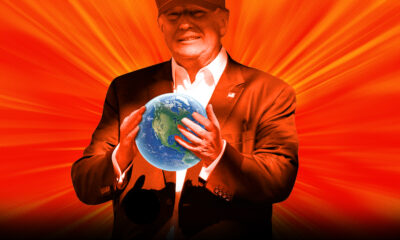
 The Josh Fourrier Show10 months ago
The Josh Fourrier Show10 months agoDOOMSDAY: Trump won, now what?
-
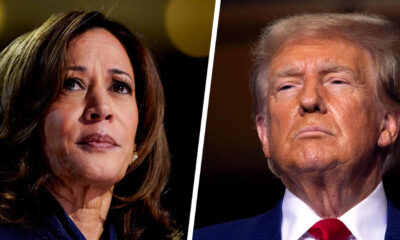
 Politics10 months ago
Politics10 months agoWhat 7 political experts will be watching at Tuesday’s debate
-
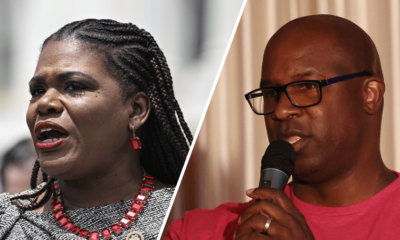
 Politics7 months ago
Politics7 months agoFormer ‘Squad’ members launching ‘Bowman and Bush’ YouTube show
-
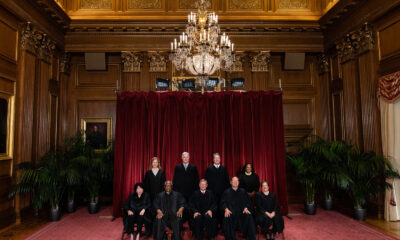
 Politics10 months ago
Politics10 months agoHow Republicans could foil Harris’ Supreme Court plans if she’s elected
-
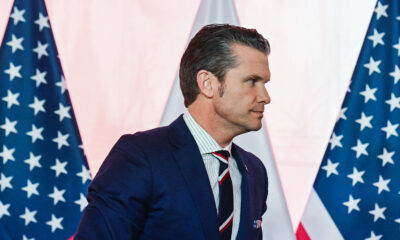
 The Dictatorship7 months ago
The Dictatorship7 months agoPete Hegseth’s tenure at the Pentagon goes from bad to worse
-

 The Dictatorship7 months ago
The Dictatorship7 months agoLuigi Mangione acknowledges public support in first official statement since arrest
-
Economy10 months ago
Fed moves to protect weakening job market with bold rate cut



